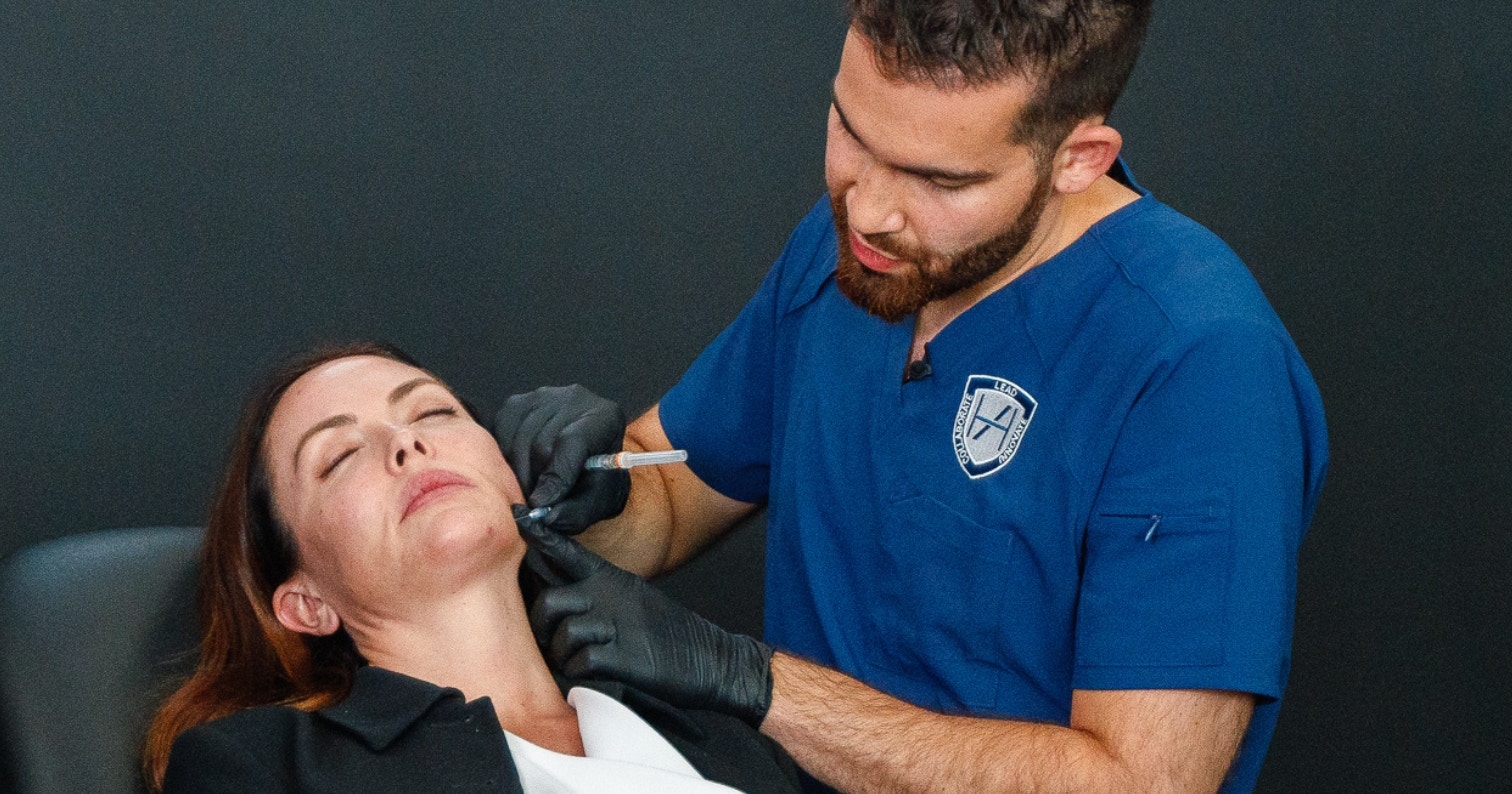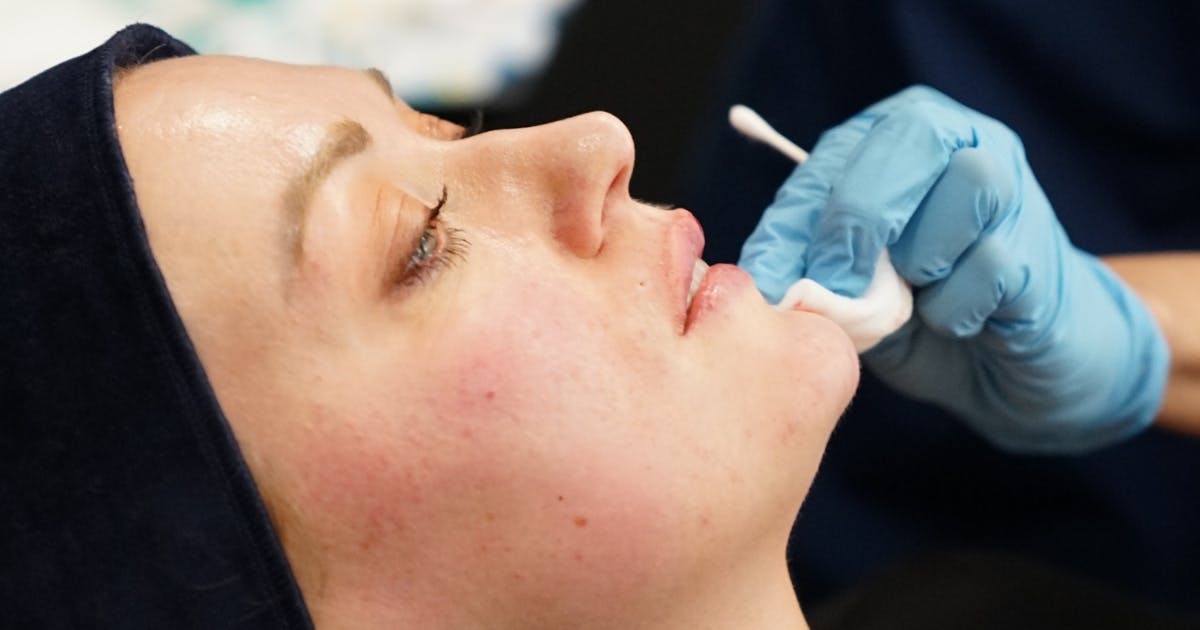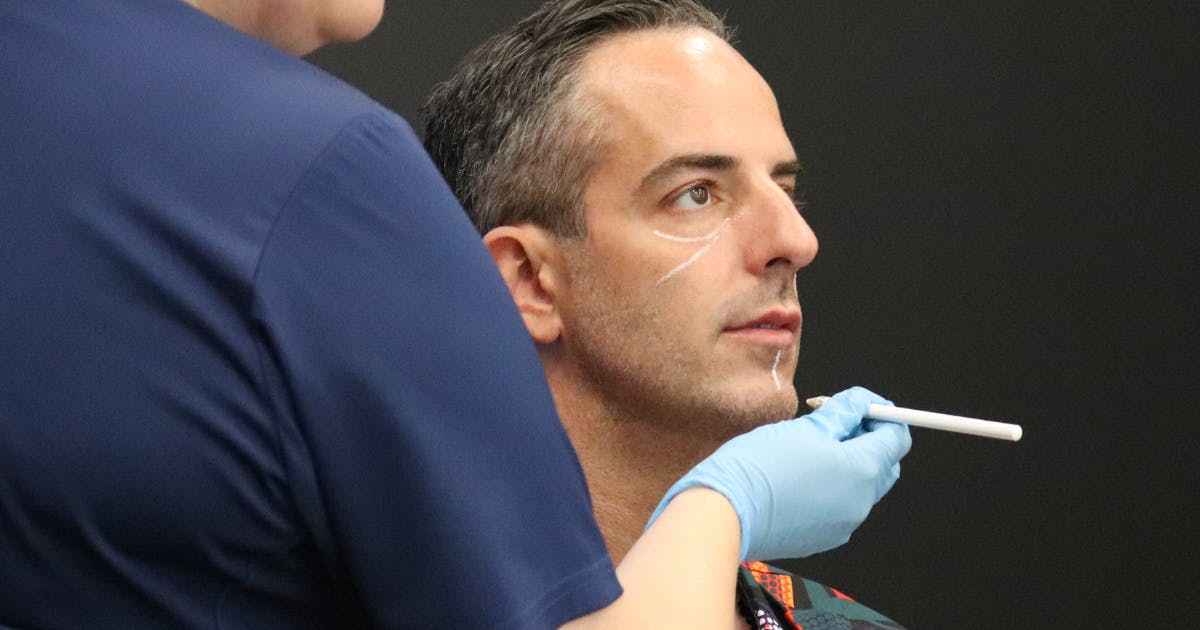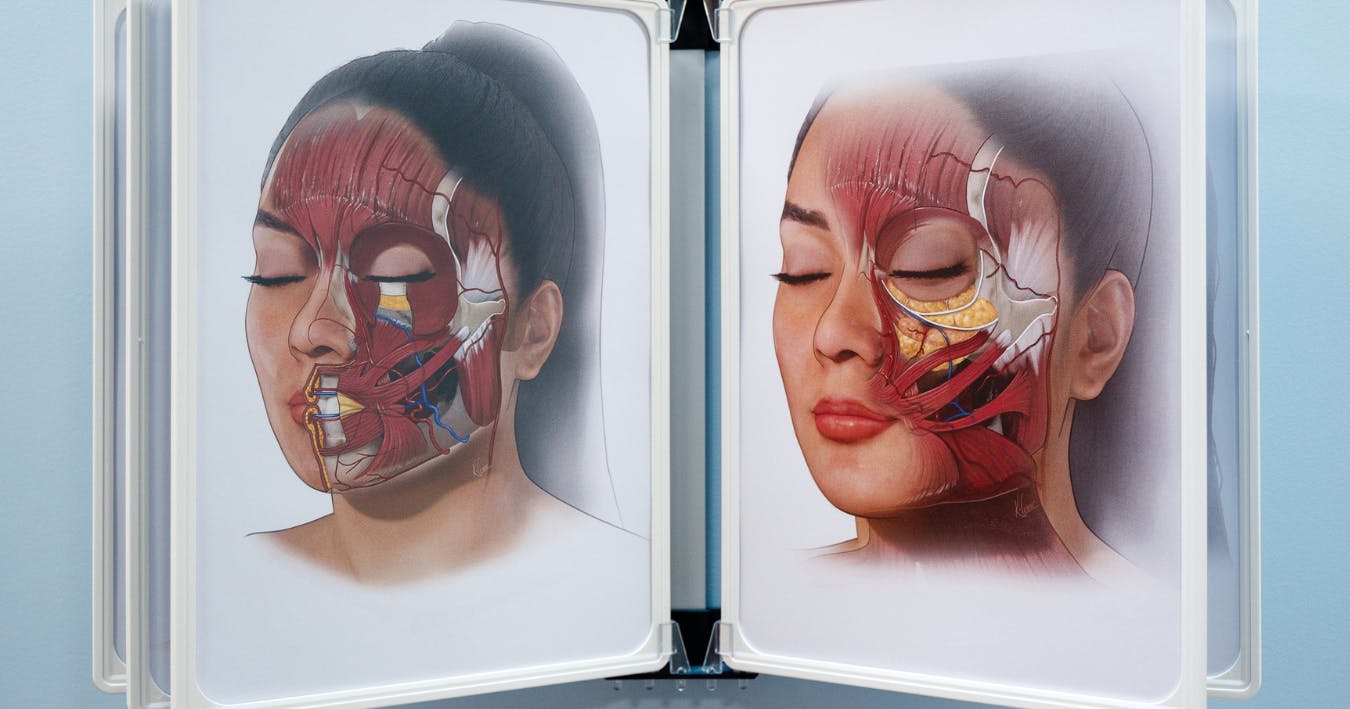An Injector’s Guide to Differences in Male & Female Facial Anatomy

In aesthetic medicine, a strong knowledge of male and female facial anatomy is paramount. In addition to enhanced patient safety, a detailed understanding of the anatomical structures allows for more thoughtful treatment plans. This, in turn, can produce better results for your patients.
Whilst most cosmetic injectable patients are female, aesthetics practitioners should also know how to treat the male face. This includes having a deep familiarity with the differences between men’s and women’s facial anatomy.
Please note that when we refer to “male” or “female” patients, we are including those who are male or female-presenting.
We spoke to our Founder & CEO, Dr Tristan Mehta for his insights on these differences. As a medical aesthetics expert and innovator of the Level 7 qualification in injectables, he provided the following guide…

The 3 key differences in male & female facial anatomy
Dr Tristan notes the three elements where men’s and women’s facial anatomy differ…
1. Bone structure
“Men typically have more prominent, angular bone structures,” he advises. This includes having:
- A stronger brow ridge
- More pronounced jawline
- A broader chin.
Dr Tristan adds, “Ideally, men have a jawline width - bigonial width - equal to the width of the cheekbones - bizygomatic distance.”
He notes that “women tend to have softer, more rounded contours.” These feature a:
- Less pronounced brow ridge
- Narrower jawline
- More pointed chin.
2. Soft tissue distribution
“Men have thicker skin and more muscle mass, particularly in areas such as the jaw and temple region,” explains Dr Tristan.
“Their facial fat tends to be distributed differently, often concentrated around the jawline and chin. Men’s lips are typically the width of the chin.”
Where women differ is that they “generally have thinner skin, less muscle mass, and their facial fat is more evenly distributed. This often gives them a smoother and more contoured appearance. In women, the width of the fullness of the lips often aligns with the width of the nose.”
3. Facial ratios and proportions
Dr Tristan clarifies the differences between men’s and women’s facial ratios and proportions, as follows.
“Men’s facial proportions are generally larger, with a longer and broader face. They often have a lower brow and larger nose. A projected chin can look masculine, whereas an under-projected chin can look ‘weak’.
“Conversely, women tend to have higher brows, a smaller nose, and a more delicate, shorter face. A projected chin can look masculine, and an under-projected chin can look beautiful.”

Men’s and women’s aesthetic goals vary
“When considering treatment goals, I find clear differences between what men and women want to achieve,” highlights Dr Tristan. “Every patient is an individual with their own vision of what they want to achieve. However, there are definite patterns in what outcomes men and women want to see.”
Male aesthetics patients’ goals
“For men, the goal is often to maintain or enhance masculine features. They often want to emphasise a strong jawline, enhance the chin and maintain a broader, more angular appearance. This includes ensuring the width of the jawline complements the cheekbones and keeping the lips in proportion with the chin.
“When treating male injectable patients, we tend to avoid adding too much fullness to the front of the cheek. This is because the outcome can have a more feminine appearance.
Female aesthetics patients’ goals
“Women’s focus is often on enhancing femininity by softening their features. They generally prefer us to create smooth contours and want to maintain a more ‘delicate’ appearance.
“Attention is given to ensuring the fullness of the lips aligns with the width of the nose. Higher cheekbones can create a dramatic and powerful feminine feature, desired by many female patients.”
Which injectable treatments work best for men vs women?
“There are certain areas of focus that should be considered when assessing each cohort,” confirms Dr Tristan. He lists these below.
Areas of focus for male aesthetics patients
- Jawline definition
- Chin enhancement
- Brow contouring
- Being careful to avoid overly softening or feminising the face.
Areas of focus for female aesthetics patients
- Cheek augmentation
- Lip enhancement
- Smoothing of the forehead
- Softening nasolabial folds
- Keeping the emphasis on creating balanced, soft contours.

How to adjust your approach for male vs female aesthetic patients
Based on the differences in facial anatomy, Dr Tristan outlines how to adjust your approach for male and female patients.
“When treating male injectable patients, injections are typically placed to maintain or enhance angularity and volume. Whereas female aesthetic patients generally require injection techniques that create lift and contour.”
“For example, when treating men, you’re often adding volume to the jawline and chin. However, when treating women, the focus tends to be more on enhancing the cheeks, softening the nasolabial folds, and creating a more tapered jawline.
“The dosage may also be higher for male patients due to thicker skin and more muscle mass.”
What you need to learn to treat all aesthetics patients effectively
When you undertake reputable medical aesthetics courses, you’ll learn how to treat both men and women.
Dr Tristan has spotlighted the following differences cosmetic injectors need to be aware of, which should be taught during aesthetics training.
A comprehensive aesthetic medicine education should cover the differences in male and female facial anatomy, assessments, treatment planning and injection techniques. Understanding which filler products to use, where is also vital information.
Furthermore, it should also build your competence and confidence in tailoring bespoke treatments to achieve each patient’s individual goals.
Learning how to treat male aesthetics patients
Your aesthetics training should cover the following instruction for treating male aesthetics patients, advises Dr Tristan:
- Understanding the differences in male anatomy, such as thicker skin and the need for more robust volume in certain areas
- Techniques to enhance masculine features without over-softening. This includes ensuring the jawline width is balanced with the cheekbones and maintaining proportional lip width relative to the chin
- Customising your injection techniques with an emphasis on preserving the ruggedness and angularity of the male face. At Harley Academy, aesthetic practitioners are trained to use higher volumes and deeper injections
- Using filler products with higher viscosity and more structural support to achieve the desired results, such as strong jawlines and chins.
Learning how to treat female aesthetics patients
When learning how to treat female patients, he advises that your botox and filler courses should cover the following:
- Understanding female facial anatomy
- Emphasising the importance of subtlety and precision in maintaining the natural curves and softness of the female face
- Techniques that focus on enhancing femininity without creating exaggerated features. This includes ensuring lip fullness aligns with the width of the nose
- Emphasising the use of smaller volumes of filler and more superficial injections to enhance softness
- Why softer fillers might be chosen to create smooth transitions and delicate contours.

Additional considerations for a well-rounded approach
Consider Dr Tristan’s next pointers to ensure your aesthetic practice is well-rounded and effective.
As he says, “Understanding these differences ensures that aesthetic treatments are both effective and aligned with the patient’s gender-specific goals and anatomical realities.”
By taking the time to grow your knowledge and understanding in these areas, you’ll enhance the quality of your work and results. The better the outcomes you can produce, the happier your patients will be - and the more work you’ll get as a result!
One size does not fit all - learn to tailor your injectable techniques
“The key to successful facial injectables is understanding that one size does not fit all,” counsels Dr Tristan. “Aesthetics training programmes increasingly emphasise the importance of a tailored approach. You need to consider the unique anatomical and aesthetic goals of each gender.”
Keep up with evolving standards for male patients in aesthetic medicine
“As the demand for male aesthetic procedures increases, there’s a growing focus on developing and refining techniques specifically for male patients. This includes ongoing research and adaptation of existing methods to better meet men’s aesthetic goals.”
Understand cultural and personal aesthetic preferences
“We use the consultation to ensure that we are fully informed of the patient’s subjective concerns, before expressing our examination findings. It’s useful to take this opportunity to understand the gender expression of the patient and ensure we know what ‘feminisation’ or ‘masculinisation’ means for them.
“Too often injectors are keen to project their own beauty standards onto patients. If this is not aligned with their concerns, it could psychologically do more harm than good.
“Aesthetics practitioners should also be mindful of different cultural beauty ideals. The typical Western aesthetic is not universally desired across all cultures, although this is what most injectables teaching is currently based upon.
“Having an understanding of Black, South or East Asian cultural ideals can broaden your capacity to deliver great results to all patients.”
Which aesthetics course covers this in the most detail?
The Level 7 Diploma in Botox & Dermal Fillers offers the most in-depth exploration of the differences between male and female facial anatomy and the approaches they require.
Whilst you’ll get an introduction to these techniques in our shorter filler and botox courses, only our postgraduate level qualification provides a truly detailed education.
This Ofqual-regulated and JCCP-approved course delivers the highest standard of aesthetics training in both theory and practical elements. You’ll not only learn the differences in male and female facial anatomy and how to treat these patients. You will also get extensive hands-on practice of treating them with filler and botox during one-to-one mentored injecting sessions.
During these mentoring sessions you’ll treat your own patients, provided by us, taking them through the entire appointment. You won’t share patients so you’ll be able to get comfortable with running full appointments from consultation and assessment to treatment planning and administering treatments. You’ll even provide their aftercare advice and answer their questions, with the help of a dedicated clinical trainer who’ll be there supporting you every step of the way!
For more information on our Level 7 aesthetics courses, or any of our other injectables training options, book a call with our Courses Advisors. They’re helpful, extremely knowledgeable and won’t pressure you into purchasing! Having helped thousands of medical professionals to establish their aesthetics careers, they’re perfectly placed to answer all your questions.
All information correct at time of publication
Download our full prospectus
Browse all our injectables, dermal fillers and cosmetic dermatology courses in one document
By submitting this form, you agree to receive marketing about our products, events, promotions and exclusive content. Consent is not a condition of purchase, and no purchase is necessary. Message frequency varies. View our Privacy Policy and Terms & Conditions
Attend our FREE open evening
If you're not sure which course is right for you, let us help
Join us online or in-person at our free open evening to learn more
Our Partners














STAY INFORMED
Sign up to receive industry news, careers advice, special offers and information on Harley Academy courses and services

